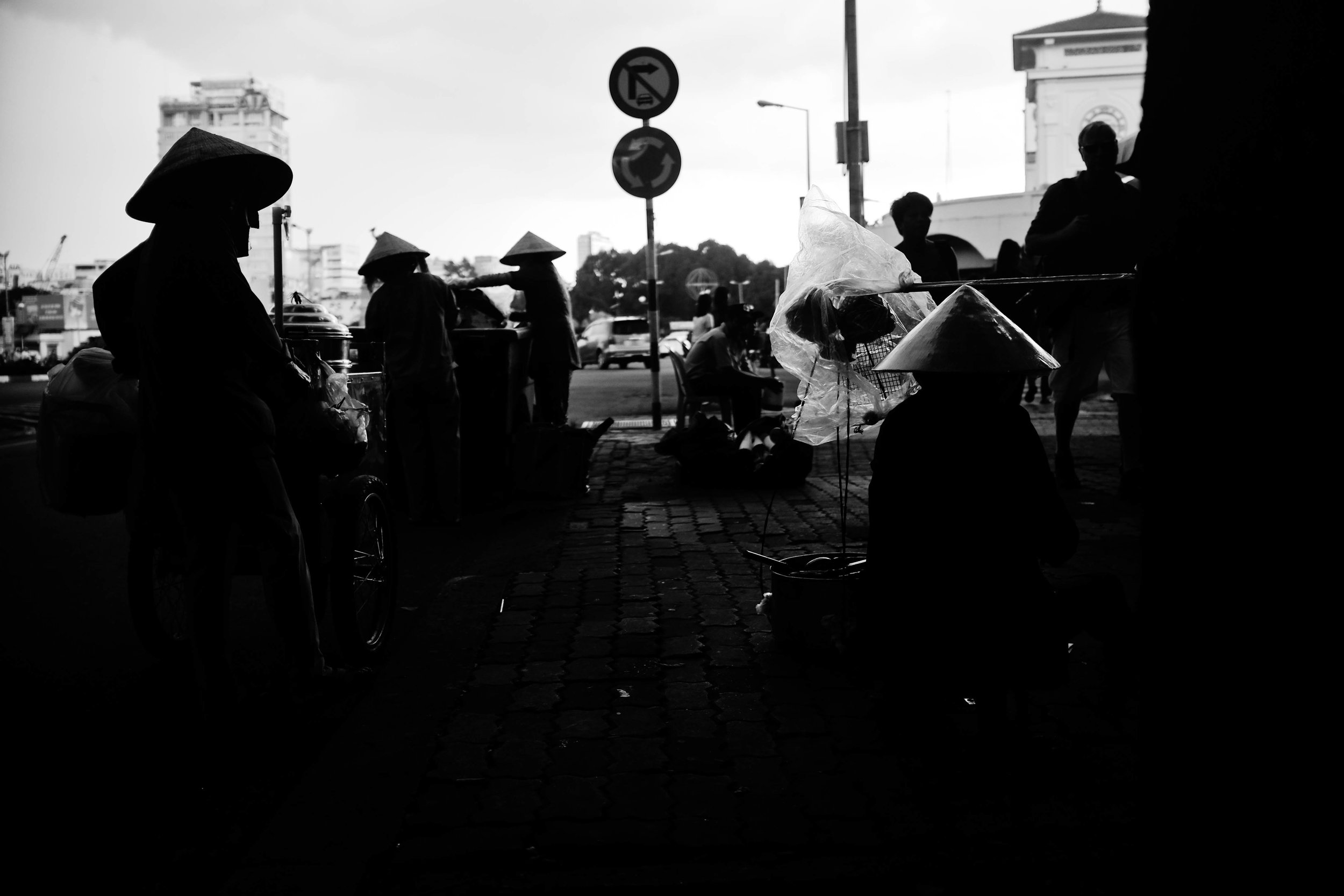Street Photography
Street Photography makes up for some of the most iconic and moving photos of the last century. It essentially is photography for Art or Social Studies sake. Focusing on true random encounters in public spaces. There’s often no positioning of subjects here which is for me the true charm of it. Photos are often not quite right or involve an odd angle or strange perspective which make them so gloriously off kilter and not right that they are mesmerising and strikingly raw.
It can be daunting to start out. I tend to do it when I travel and find that at the very beginning putting a camera to my face can be embarrassing and at the very least conspicuous. So to get you going you could try shooting from the hip. This is an art-form in itself and is a real skill that few develop.
Shooting from the Hip
Essentially you take photos with your camera nowhere near your face and without the aid of a screen, shooting blind in a way. By doing this you end up with some truly interesting photos from angles that are usually the preserve of a child. There’s often movement in these photos as both you and your subject are frequently in motion, so considering camera speeds and apertures is important. Showing up the movement in the photo often gives it a real life so shooting below 1/100 of second is worth considering. But a word of caution. Surreptitiously taking photos although achieving great results can look suspicious so make sure not to take photos of things you shouldn’t be. Being caught taking photos of military police no matter how good the photo might not be looked on very favorably if done so secretly.
Picking the right camera
You may have a brand new Nikon 5 but as good as that is, for street photography it’s next to useless. It’s so conspicuous, so “Look at me I’m taking a photo” that people are bound to notice and subsequently alter their actions. Ideally you want to be using something capable, small, and with a reasonably wide angled prime lens. My preferred choice, having still to buy a Leica, is a Fuji. I use either an X100s or an XT2. Both very capable, both rather small. The X100s is probably my favorite though as it has a fixed 23mm F2 lens. The dials are all there on the camera body so I don’t have to play with the screen but can rather nonchalantly mess with the settings without drawing attention to myself.
Should you steal the shot?
This is up to you. When you steal a shot you catch a real moment without your involvement altering it at all. these photos are photojournalistic in a way as the subject is focused on whatever it is they’re doing and ideally you the photographer haven’t entered the periphery, but when you ask for permission you gain something else to counter that loss. You give the subject an opportunity to arrange themselves in the way they’d like to be seen. This could be a smile or puffing out a chest or maybe arranging themselves with the cards they’re dealing of the chickpeas they’re shucking. This is how they want to be seen and remembered and so you’ve caught that. You’ve caught not just the person or personality but without sounding too grandiose, some of their thoughts feelings and possibly insecurities too. That lends a whole new element to the photograph and creates a connection between subject and photographer. There’s often a brief conversation, I’ve chatted with old artisans and taken pictures of them working in dusty workshops through the entrance doors. I’ve met illegal loggers as they waited in line sometimes for days to be let over the border and shared thimble sized cups of tea with them. These for me were some of the most rewarding encounters because they forged memories that have stayed with me ever since.
So you have to make the call, about whether to steal a shot or ask for it.
The Interview
Perhaps the most interesting encounter I have had with street photography goes to show that the exception makes the rule. I was trying to surreptitiously take photos during the protests and riots in Thailand in 2013. Before I give the wrong impression, I arrived and had left before any outbreak of violence really took place and the atmosphere was reminiscent of a festival rather than the unease and electricity you feel around a violent outbreak. On this outing I had a big Nikon with me with large glass too as opposed to a little Olympus I’d left back at the hotel. So my stolen shots were noticed as was I. Again, there was no threat here but I was mistaken for a journalist and was offered an interview with the Sister-in-law of the leader of the coup. She was a political player in the party. I started to protest but then thought why not? and was sat down, fed, watered and soon enough She and her translator came over. She was well put together in large sunglasses and I had the surreal experience of plucking questions out of thin air to give to the translator whilst sat on a small red plastic stool in the mid-day heat surrounded by many interested Thais. It started as Street Photography and ended in one of the most unusual and interesting encounters of my life.







